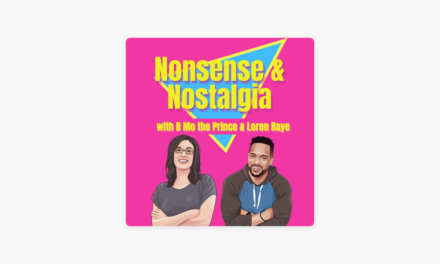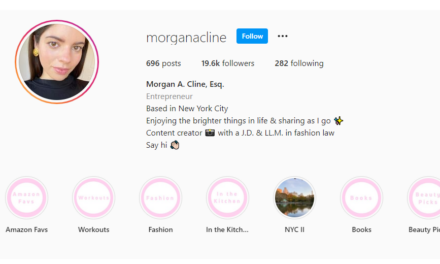Entrepreneur: Charlie James
Biz: Nonbinary Cowboy
Tilt: Sketch comedy
Time to First Dollar: 6 months
Channels: TikTok (346.9K), Twitter (10.2K), Instagram (8.7K)
Rev Streams: Merch, creator fund
Our Favorite Actionable Advice:
- Look for inspiration in unexpected places: Charlie’s clothing one day inspired their successful TikTok storytelling about how a little frog on a lilypad lives.
- Lean into audience reaction: It’s not a laugh or silence but metrics that let Charlie know what’s working with their TikTok comedy.
- Realize creation time and success are not necessarily related: Charlie’s found success usually comes from the video content they haven’t spent hours creating.
The Story
Charlie James lives their life the same way a little frog on a lilypad would, and their followers do, too. That comedic content tilt has not only helped them gain followers but even write a bookl (alongside TikTok illustrator Paige on a Page.)
A little frog on a lilypad lives a simple life. They’re allowed to splash around in birdbaths, help teen sleuths solve mysteries, wreak havoc, and more. But there are specifiers about what they cannot do, as well. A little frog cannot kill, cannot hold a commercial driver’s license, and cannot “participate in the economy.” These limitations lead to a fairly peaceful life in Charlie’s eyes as a TikTok creator and in the eyes of their dedicated fans.
The comedian started the frog series based on an outfit they were wearing, and it’s been a creative mine of content since. “I was about to run out the door to go get dinner with some friends, … and I thought, ‘A little frog on a lilypad would definitely wear this outfit.’” they tell The Tilt. “And I went, ‘You know, that’s not a bad way to live my life.’ Honestly, I don’t think there’s anything a little frog on a lilypad would do that I wouldn’t do, and vice versa.”
Charlie James’ success comes with modicum of thought
Their frog story success reflects a lesson they learned about their video creation, too. “I’ve found, oddly, the things that have the most success on TikTok are usually the things I put a medium amount of thought into. That was very much on the fly of like, ‘Well, I’m already headed out the door, so I’m just gonna post this video for the day.’ And people really got a kick out of it, which I really appreciate. I’m glad we all agree we wish we were living in whimsical children’s storybooks.”
TikToker Charlie James (@NonBinaryCowboy) has found the most successful videos are usually the things they put a medium amount of thought into. #ContentEntrepreneur #CreatorEconomy Share on XThe frog wasn’t their first viral hit, though. Charlie says the first content series that really made them believe they could have a successful online career was about an alien who lives with a human roommate. The series was so successful, they kept telling it for five months.
Comedy shifts from in-person to TikTok
Charlie has been a stand-up comic for years, and it wasn’t until COVID that they decided to take their comedy skills online. Charlie had to change the content because live in-person shows and TikTok are very different.
“I started a TikTok account right when quarantine began, mainly because a lot of what I do is live comedy, and that had just completely disappeared,” Charlie says. “I thought, ‘OK, I’m gonna figure out what this TikTok thing is, and I ended up loving it.”
The main difference between a comedy club and online? TikTok’s metrics show creators exactly what is and isn’t working. “When you’re performing live, you get feedback on your jokes in the form of laughs. If a joke doesn’t work, it’s silent. But on TikTok, it feels like it’s more in terms of views. If a video isn’t performing well, fewer people will see it. So, it’s a really fast way for me to test out which jokes work and which don’t,” Charlie says.
The @NonBinaryCowboy shifted from in-person shows to TikTok. The main difference? @TikTok metrics show them what is and isn't working. #ContentEntrepreneur Share on XPartnerships with nonprofits to promote merch
Even though Charlie did little planning to become a digital sensation, they have found success. They monetized their content quickly, even offering merch collabs and charity opportunities while bringing in revenue for their content business. Charlie’s partnered with Hope For the Day, a suicide prevention organization and a nonprofit that pays legal fees for immigrants.
Charlie explains why it’s helpful: “It was a really cool experience because I think whether you partner with a charity and give, like, all of the profits or part of the profits to that group, it definitely makes people want to buy the merch more. I don’t necessarily know if I put out sweatshirts right now if people would buy them. But by saying, ‘This amount of money goes to this group’ – that has really helped, for me. And it feels less like I’m selling something to the audience. It’s like ‘Let’s collaborate and do this nice thing.’”
Advice for content entrepreneurs
Charlie advises content creators looking to become content entrepreneurs to avoid striving for perfection: “Don’t get bogged down when something doesn’t perform well,” they say. “Just keep making something. If I had a video that didn’t do well, the instinct is, ‘Oh no, something’s wrong here.’ But I wouldn’t be so quick to assume that it’s about content. Moreso, you just have to keep making new stuff that you’re excited about. Eventually, people will respond to it if they feel the same.”
About the author
Kelly Wynne is a journalist and creative writer living in Chicago with her pet dachshund. She's an advocate for women's rights, mental health, and chronic illness.










